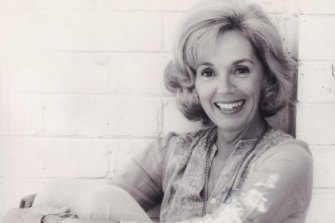
Along with Raye, those names represent a golden era during the early years of television in this country, a time when Australians only had a couple of channels to choose between and TV studios were like vaudeville theatres; mini Hollywood dream factories churning out a daily fare of all-singing, all-dancing entertainers on shoe-string budgets.
Having already achieved considerable success as an actor in England, Raye arrived in Australia in 1964 and brought with her a letter of introduction which got her to Seven’s general manager, James Oswin.
Initially, she was appointed as Oswin’s assistant in “matters of live programming” and was given an office and a brief to watch local television and come up with ideas for new programs.
Inspired by the BBC’s That Was The Week That Was, Raye suggested a show based on TW3’s format of topical satire and enlisted Gordon Chater, Barry Creyton and Noeline Brown to create The Mavis Bramston Show.
To develop the script, Raye hired a team of writers including James Fishburn, John Mackellar, David Sale (who went on to write 1970s soap opera Number 96), actor-writer Jon Finlayson, Melvyn Morrow and Ken Shadie, who also later wrote for Number 96 and co-wrote the script of Paul Hogan’s Crocodile Dundee.
“Television really was a tough environment for a woman. It was much more of a man’s world back then,” Raye’s daughter Sally Ayre-Smith, who followed in her mother’s footsteps and also became a producer, explained last week.

Carol Raye died last week, aged 99.
“But mum was incredibly headstrong, and held very strong views professionally, that’s just the sort of person she was. She was very strong-willed, it was impossible to win an argument with her.”
“I remember James Oswin joking to mum that he could never call her a ‘B-I-T-C-H’, but would often tell her how ‘extremely difficult’ she was to work with. But, clearly, she was right, the show was a hit.”
Ironically, Raye never considered herself a “feminist”.
“Even though that is precisely what she was. She had a bit of a plummy, English accent, was very poised and beautiful, and I think her charm certainly disarmed people who often underestimated her ... at their peril,” Ayre-Smith said.
“She had a few hundred pounds to make the pilot of Mavis Bramston, and here we are still talking about the show today.”
Loading
Next month, the Melbourne Documentary Film Festival has selected a new film about the show’s beginnings, Pushing The Boundaries: The Mavis Bramston Show, featuring interviews with Raye and others.
The film will be available to view online throughout July via the festival’s website, and it’s well worth a watch.
The Opinion newsletter is a weekly wrap of views that will challenge, champion and inform. Sign up here.









 Add Category
Add Category